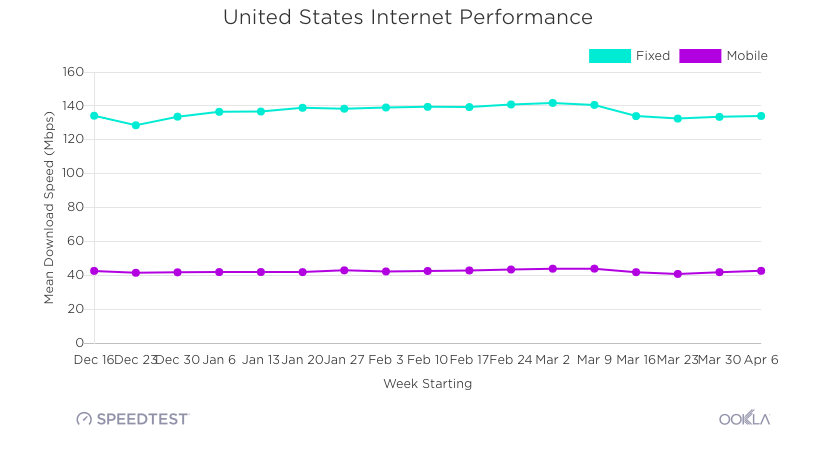Global internet backbone provider Telia Carrier reports that it saw overall traffic volume rise by around 50% during the month of March as a result of pandemic-driven shifts in network usage. There are “major regional differences,” the company added, but as of March 20, peak traffic levels are up about 35%, depending on the continent. Some specific client categories, such as video conferencing, have seen their total traffic volume balloon more than 400%.
Telia Carrier said that in terms of backbone traffic, “all days of the week now look very similar to what Sundays used to do” and that near-peak hours are “much more evenly distributed,” so there are longer periods of “high utilization and inter-continental overspill.”
While lockdown measures are “stabalizing” in Europe, the carrier added, traffic is still continuing to grow —just at a slower rate.
Meanwhile, in the U.S. market, cable broadband providers are reporting that “growth in peak traffic nationally is showing signs of leveling off.” Downstream growth is up 20% overall since March 1, and upstream growth has risen 34% in the same time period. (Check out NCTA’s COVID-19 network dashboard here.)
“Although there is some variation among individual states or regions, nationally, we are seeing two weeks of consistent data indicating growth is slowing and, in some places, even plateauing,” said NCTA—The Internet and Television Association, in a blog post on data reported from members including Altice, CableOne, Charter, Comcast, Cox, GCI, Mediacom, Midco and Sjoberg’s.
National downstream and upstream peak growth are essentially flat for the second consecutive week, NCTA reported. Upstream peak hours have shifted, however; they used to be in the late evenings, and now they’re trending more toward afternoons. It added that provider backbone networks “have significant capacity and show no signs of congestion.” NCTA members reported that their networks are supporting an increased number of Wi-Fi devices, and growth in Wi-Fi data traffic and Wi-Fi calling.

Image: NCTA
Meanwhile, the latest analysis from Ookla Speedtest shows that on a national basis, the U.S. “saw very slight increases in mean download speed over mobile and fixed broadband” during the week of April 6, compared to the week before. Ookla’s crowd-sourced data reflects U.S. networks largely holding steady on internet performance from December through early April, with a slight dip in mid-March.

Image: Ookla Speedtest
The post Telia Carrier sees 50% traffic increase in internet backbone; US network usage may be leveling off appeared first on RCR Wireless News.
